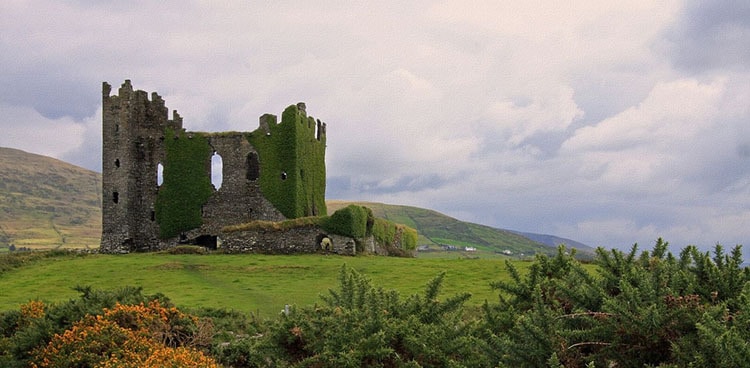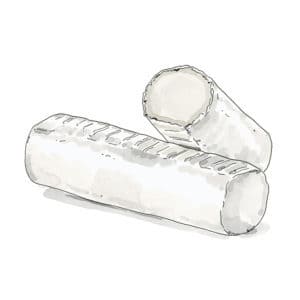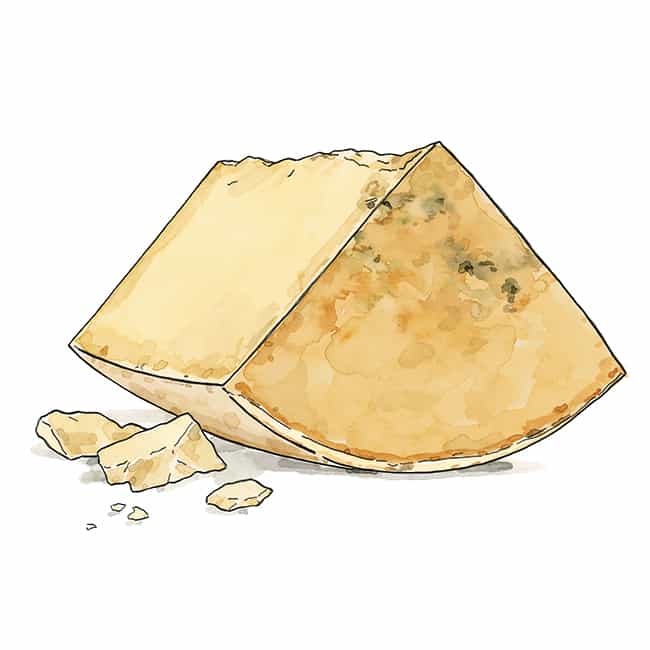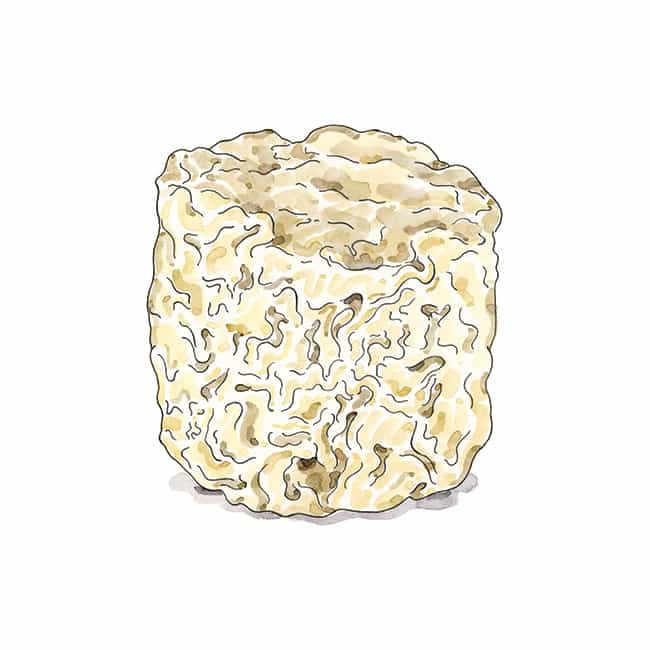
There’s great cheese nearly everywhere you look these days, whether you’re planning to summer in the south of France or ski the slopes of Canada. Over the next few weeks, we’ll take you to five popular tourist regions—the Alps, the Anglo-Celtic Isles, Australasia, Canada, and the Mediterranean—complete with recommendations for places to visit, fun facts, and of course, some of the best wedges and wheels in the area.
From Stonehenge to the Scottish Highlands and Dublin to Snowdonia, the Anglo-Celtic Isles—England, Wales, Scotland, and Ireland—offer a wealth of history, culture, natural splendor…and, of course, curds. Cheddar and Stilton may encapsulate cheese from across the pond for many, but the resurrection of farmhouse tradition (first in the UK, then Ireland in the late 1970s) has led these two islands to punch above their weight at international competitions. The result: award-winning products characterized by experimentation respectful of tradition.
GOLDEN CROSS
Golden Cross Cheese Company, Lewes, England
Divine intervention wasn’t necessary for Golden Cross—named for the rooftop cross of a local pub—to nab gold at the latest Artisan Cheese Awards. Based on a Sainte-Maure recipe 25 years in the tweaking, this unpasteurized goat’s milk log bears a bloomy Penicillium candidum rind and an interior firmer than its French cousin. Matured a couple of weeks and dusted with charcoal, its flavor is goaty and creamy.
SPENWOOD
Village Maid Cheese, Riseley, England
When Anne Wigmore launched Village Maid Cheese out of a garden shed in 1986, she called on memories of tasting Sardinian pecorino to create Spenwood. Aged six months, this hard ewe’s milk cheese is thermized rather than pasteurized—a gentler milk-heating process that allows the cream-colored wheels to retain a sweet, nutty character.
ISLE OF MULL
Isle of Mull Near Tobermory, Scotland
Using milk sourced from a herd of Swedish Red and Meuse Rhine Issel cows fed spent grain husks from a local distillery, it’s little wonder that this multi-award-winning Scottish cheddar boasts an alcoholic tang in addition to robust flavor. Aged up to 18 months, the cheese’s paste morphs in color from ivory in winter to cream in summer thanks to the herd’s varying diet throughout the year.
HAFOD WELSH ORGANIC CHEDDAR
Holden Farm Dairy, Lampeter, Wales
Though launched in 2007, this wheel tastes of the distant past. Created by Sam Holden on Wales’ oldest organic farm, unpasteurized Hafod is made from a recipe that rolls back the shortcuts of cheesemaking science. This means a longer day in the dairy, but one that results in close-knit cheddar with nutty, buttery flavor and a long, mellow finish—ripe for a gold at this year’s Artisan Cheese Awards.
CAVE AGED GOATS CHEESE
Ford Farm Cheesemakers, Dorchester, England
This hard, pasteurized goat’s cheese stormed the World Cheese Awards when it won this year’s Best British Cheese accolade. Crafted using the West Country Farmhouse Cheddar PDO recipe, Cave Aged Goats Cheese is named for its aging space, Somerset’s ancient Wookey Hole Caves. According to Ford Farm’s Mike Pullin, this is the “secret ingredient”: The heady underground atmosphere seeps into the cheese’s porous paste, enhancing its goaty flavor and caramel notes.
DUMPLING
Wootton Organic Dairy, North Wootton, England
Four years in development, Dumpling—a soft cheese named for its resemblance to a soup dumpling—scooped the Best Organic Cheese title at this year’s British Cheese Awards. To achieve a balance of honeyed, grassy paste surrounding a fresh, lactic core, brothers Dave and James Bartlett employed a French-style acid set in which curd coagulates over a slow, 12 to 18-hour period with minimal use of rennet. Aged 10 days, this unpasteurized sheep’s milk cheese may be ripened as long as a month to add punch on the palate.
CORLEGGY
Corleggy Cheeses, Belturbet, Ireland
Unpasteurized Corleggy—a hard goat’s milk cheese—was one of 66 out of more than 3,000 cheeses to win Super Gold at the 2016 World Cheese Awards. Made in northern County Cavan by mother-and-son team Silke and Tom Cropp, vegetarian-rennet Corleggy (“little windy hill” in Gaelic) forms a natural rind after a brine bath. Matured between eight weeks and four months, depending on the season, Corleggy’s mild, nutty flavor pairs well with light red wine, such as pinot noir.
DURRUS ÓG
Durrus Cheese, Coomkeen, Ireland
A pioneer of Irish farmhouse wheels, Jeffa Gill created semi-soft Durrus Óg while attempting to make a Reblochon-style to use in tartiflette. Aged three to five weeks, the washed rind—named Best Irish Cheese at the 2017 British Cheese Awards—has a rich, creamy flavor that reflects the diverse pastures on Atlantic-facing Sheep’s Head peninsula, home to Durrus Cheese.
FUN FACTS:
- Famed washed rind Stinking Bishop is named for a pear variety used to make perry. Naturally, the cheese pairs well with cider made from its namesake.
- In 1840, to celebrate her betrothal, Queen Victoria was gifted a 1,250-pound cheddar, nine feet in diameter.
- Since the early 1800s, Cooper’s Hill Cheese-Rolling and Wake have attracted a crowd to chase a nine-pound round of Double Gloucester down a steep hill. The winner keeps the cheese.
Traditional Cheesy Dish: Welsh Rarebit
The apotheosis of cheese on toast, Welsh Rarebit comprises a slice of grilled bread slathered with a sauce of mature cheddar, Worcestershire sauce, whole-grain mustard, and stout beer.
Traditional cheese pairing: Wensleydale and fruitcake
A pairing particularly popular in Northern England, which produces crumbly cheeses (Wensleydale, Cheshire, and Lancashire), the combo offers an ideal balance of lactic bite and currant-brandy decadence.







